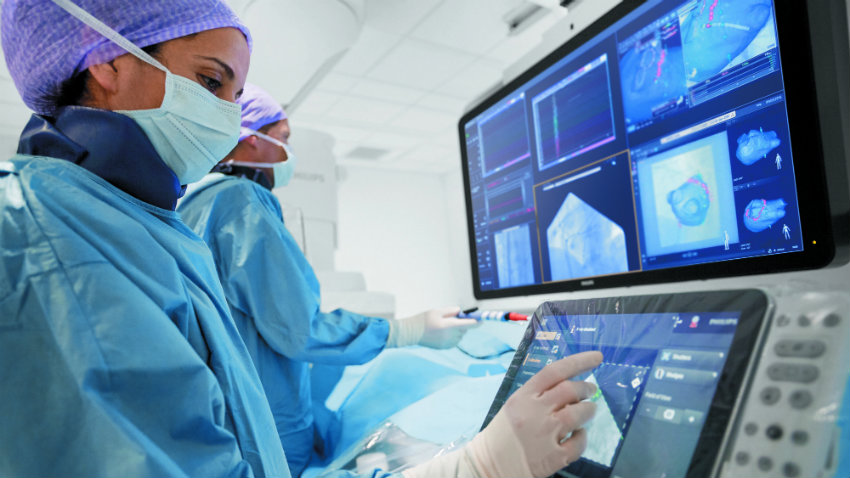A part of everyday life since ancient times, the history of the catheter over thousands of years has mirrored the technological development of mankind, evolving from using rolled-up reeds and stalks to precious metals and then rubber, latex, plastics and polymers. Now this ubiquitous medical device is on the frontline of a new revolution in healthcare.

Equipped with miniature imaging technologies, today’s intravascular catheters are guiding clinicians through a patient’s body and helping them successfully treat heart disorders and cardiovascular diseases without the need for surgical procedures that can be both traumatic and expensive. “By innovating in imaging, software and catheter design, we are making the catheter smart,” explains Henk van Houten, chief technology officer at Dutch healthcare giant Royal Philips. “For example, using miniature audio sensors around the catheter tip, clinicians are now able to image the heart from within.”
“At Philips, research and innovation have always been able to ride the waves of disruption and lead the company into the future.” Henk van Houten, Chief Technology Officer, Royal Philips
In early 2017, Philips launched an image-guided therapy platform, Azurion, which harnesses the power of these new technologies for clinicians.
It combines real-time images from sensors on devices such as catheters with information from patient health records and other sources, all on one intuitive user interface. Azurion makes it easier for specialists, who cannot directly see and feel the organs they are working on, to visualize target organs and tissues and carry out the procedures necessary successful treatment.
It is not only in the treatment stage that new technologies are transforming the processes and economics of healthcare. Philips has also developed powerful software to help pathologists interpret huge volumes of clinical data from sources such as x-rays, biopsies and genomics, leading to faster and more accurate diagnoses of diseases before they take hold of a patient.

What van Houten calls the industrialization of care is making clinical processes more efficient and effective. Innovative technologies are also enabling new levels of personalized care away from hospitals and in the home.
“Philips is committed to ensuring that the quality of life is optimal,” reveals van Houten. Connected health devices such as ear thermometers, blood pressure monitors and scales synchronize information with apps in real time, empowering consumers to take care of their own health and manage any existing conditions.
“Thanks to the technology of the Internet of Things, you can combine information from different sensors with disease models and smart algorithms to interpret the condition of the patient,” van Houten explains. “It means you can prevent any deterioration rather than making expensive and invasive repairs after the event.”
Connected devices are now making rapid inroads into the healthcare markets for vulnerable segments of the population such as infants and the elderly. The Philips CareSensus home monitoring solution helps seniors maintain their independence thanks to discreet, non-camera based sensors placed strategically around the home.
At the other end of the spectrum, the uGrow parenting platform captures data from connected devices, such as smart baby monitors and thermometers, combines it with information such as feeding and sleeping patterns and provides personalized feedback, advice on what to expect and assurance that development is on track.
An early commitment to open innovation has helped Philips emerge as a leader in this
new healthcare landscape; the company has long-term partnerships with major hospitals and universities including MIT and is investing in a series of promising start-ups to access their ideas and technologies.
“Open innovation is increasingly about creating an ecosystem of partners that leverage your platform,” van Houten says. “In this competitive world, collaboration is the key to success” ![]()









